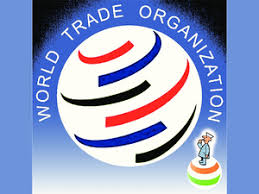What is
the WTO?
The World Trade Organization (WTO)
is the only global international organization dealing with the rules of trade
between nations. At its heart are the WTO agreements, negotiated and signed by
the bulk of the world’s trading nations and ratified in their parliaments. The
goal is to help producers of goods and services, exporters, and importers
conduct their business.
Who we
are?
There are a number of ways of
looking at the World Trade Organization. It is an organization for trade
opening. It is a forum for governments to negotiate trade agreements. It is a
place for them to settle trade disputes. It operates a system of trade rules.
Essentially, the WTO is a place where member governments try to sort out the
trade problems they face with each other.
What we
stand for?

The WTO agreements are lengthy and
complex because they are legal texts covering a wide range of activities. But a
number of simple, fundamental principles run throughout all of these documents.
These principles are the foundation of the multilateral trading system.
Non-discrimination
A country should not discriminate
between its trading partners and it should not discriminate between its own and
foreign products, services or nationals.
More open…….
Lowering trade barriers is one of
the most obvious ways of encouraging trade; these barriers include customs
duties (or tariffs) and measures such as import bans or quotas that restrict
quantities selectively.
Predictable
and transparent
Foreign companies, investors and
governments should be confident that trade barriers should not be raised
arbitrarily. With stability and predictability, investment is encouraged, jobs
are created and consumers can fully enjoy the benefits of competition — choice
and lower prices.
More
competitive
Discouraging ‘unfair’ practices,
such as export subsidies and dumping products at below cost to gain market
share; the issues are complex, and the rules try to establish what is fair or
unfair, and how governments can respond, in particular by charging additional
import duties calculated to compensate for damage caused by unfair trade.
More
beneficial for less developed countries
Giving them more time to adjust,
greater flexibility and special privileges; over three-quarters of WTO members
are developing countries and countries in transition to market economies. The
WTO agreements give them transition periods to adjust to the more unfamiliar
and, perhaps, difficult WTO provisions.
Protect
the environment
The WTO’s agreements permit members
to take measures to protect not only the environment but also public health,
animal health and plant health. However, these measures must be applied in the
same way to both national and foreign businesses. In other words, members must
not use environmental protection measures as a means of disguising
protectionist policies.
5 things
WTO can do
The world is complex. The World
Trade Organization is complex. This booklet is brief, but it tries to reflect
the complex and dynamic nature of trade and the WTO’s trade rules. It highlights
benefits of the trading system, but it doesn’t claim that everything is perfect
it were a perfect system, there would be no need for further negotiations and
for the system to evolve and reform continually.
1 The WTO can ... cut living costs
and raise living standards
We are all consumers.
The prices we pay for our food and
clothing, our necessities and luxuries, and everything else in between, are
affected by trade policies.
Protectionism
is expensive.
Overall
incomes can rise.
Food is cheaper.
The same goes for other goods and services.
2 The WTO can ... settle disputes and reduce
trade tensions
More trade, more traded goods
and services and more trading countries — they bring benefits but they can also
increase the potential for friction. The WTO’s system deals with these in two
ways. One is by talking: countries negotiate rules that are acceptable to all.
The other is by settling disputes about whether countries are playing by those
agreed rules.
3 The WTO can ... stimulate economic
growth and employment
The
relationship between trade and jobs is complex. It is true that trade can
create jobs, but it is equally true that competition from imports can put
producers under pressure and lead them to lay off workers.
The
impact of competition from foreign producers varies across firms in a sector,
across sectors of the economy as well as across countries. So does the impact
of new trade opportunities.
4 The WTO can ... cut the cost of doing
business internationally
Many
of the benefits of the trading system are more difficult to summarize in
numbers, but they are still important.
They
are the result of essential principles at the heart of the system, and they
make life simpler for the enterprises directly involved in trade and for the
producers of goods and services.
Trade
allows a division of labor between countries.
Non-discrimination
is just one of the key principles.
Trade
facilitation
5 The WTO can ... encourage good
governance
Transparency
— shared information and knowledge — levels the playing field. Rules reduce
arbitrariness and opportunities for corruption.
They
also shield governments from lobbying by narrow interests.





